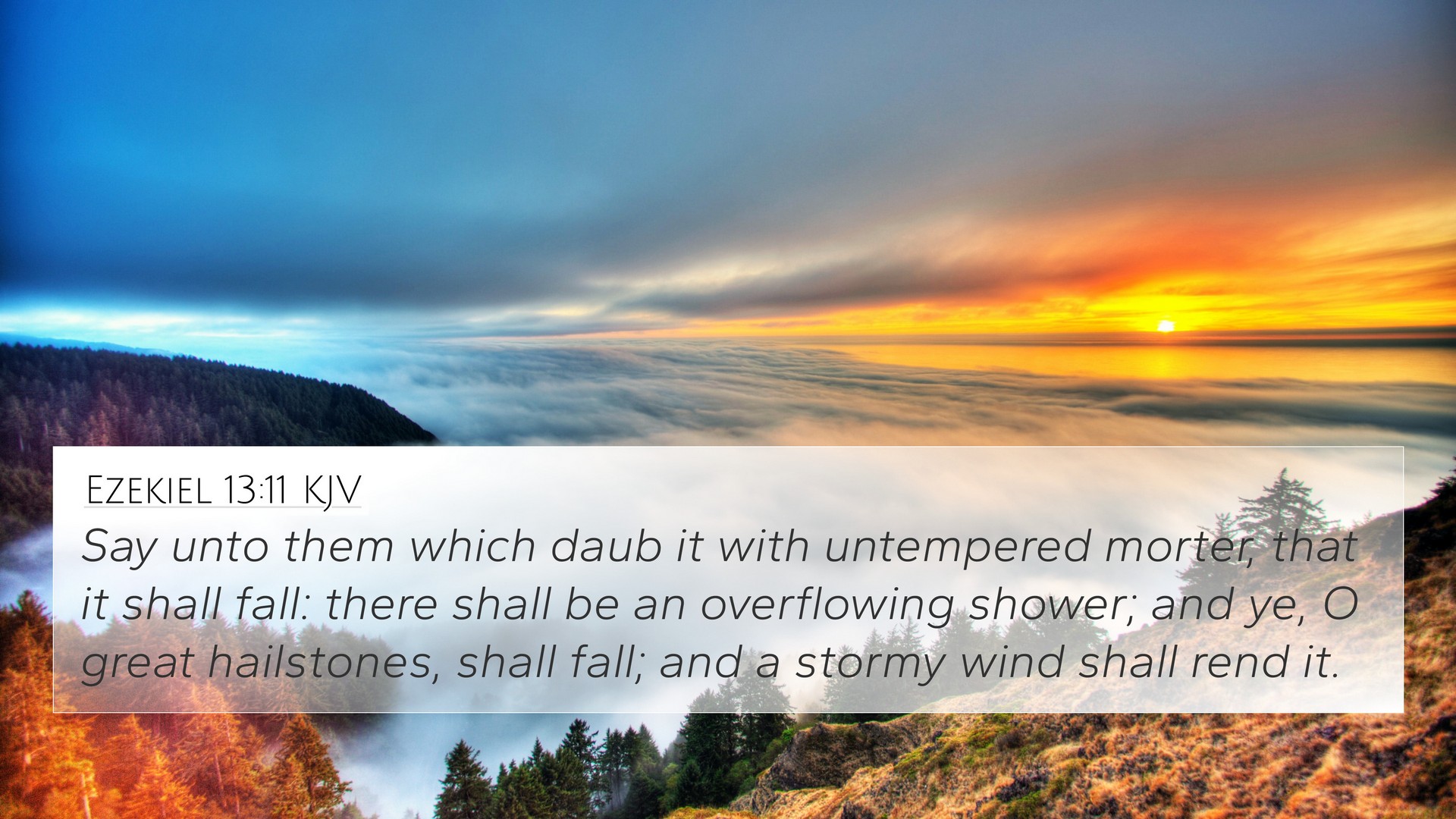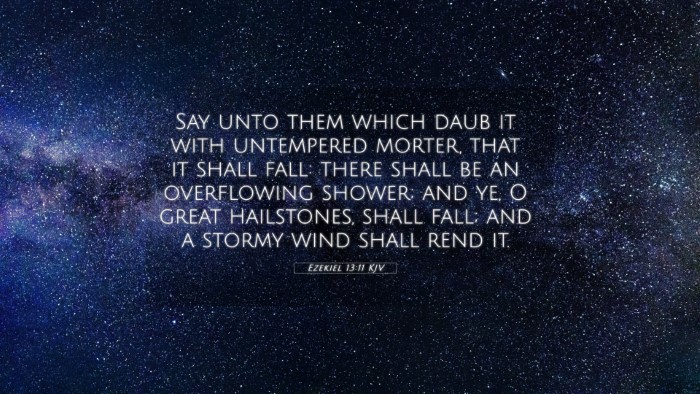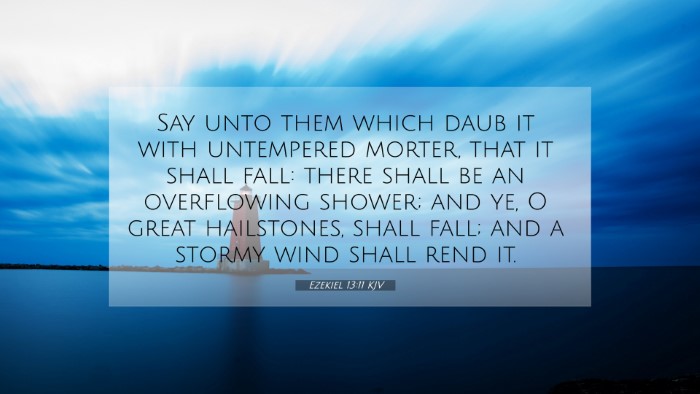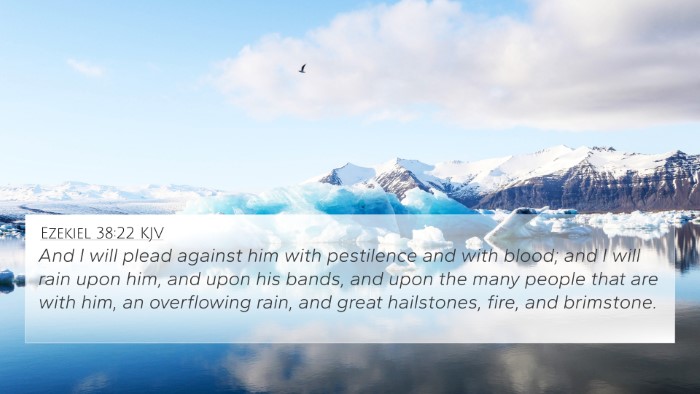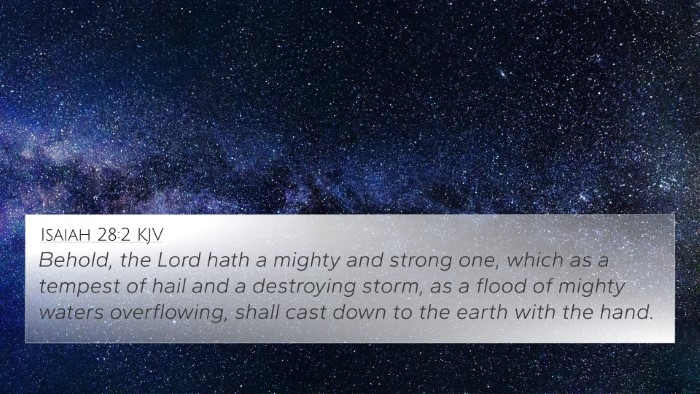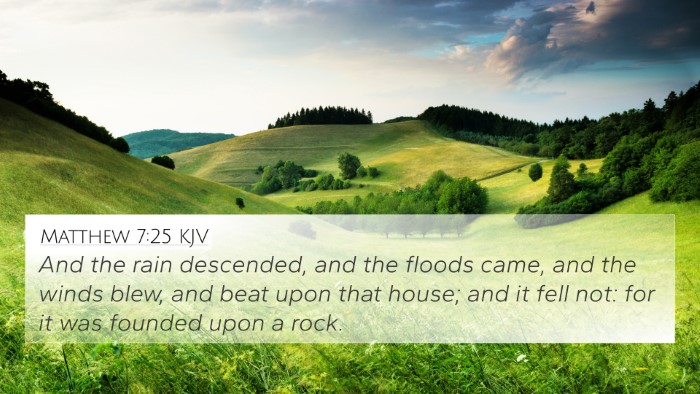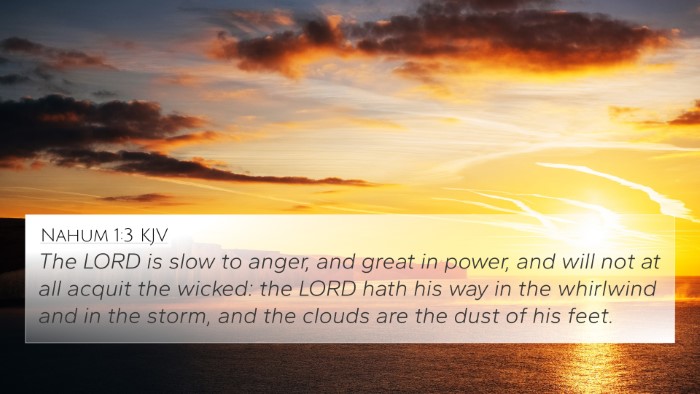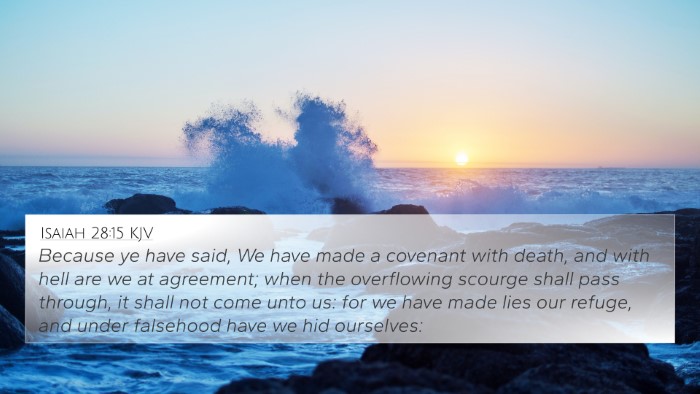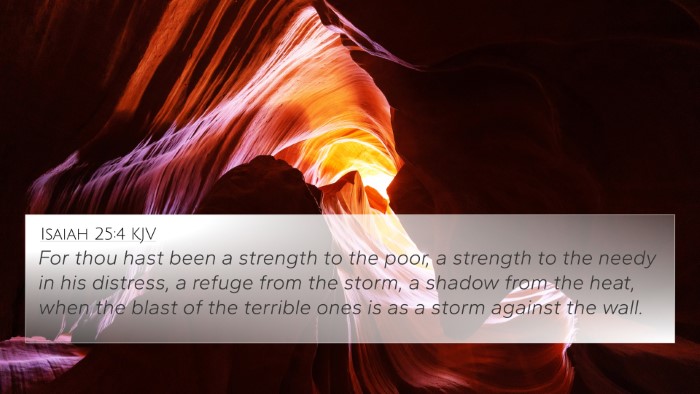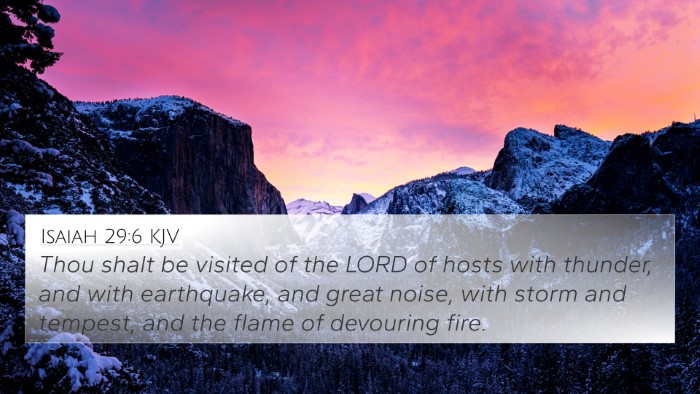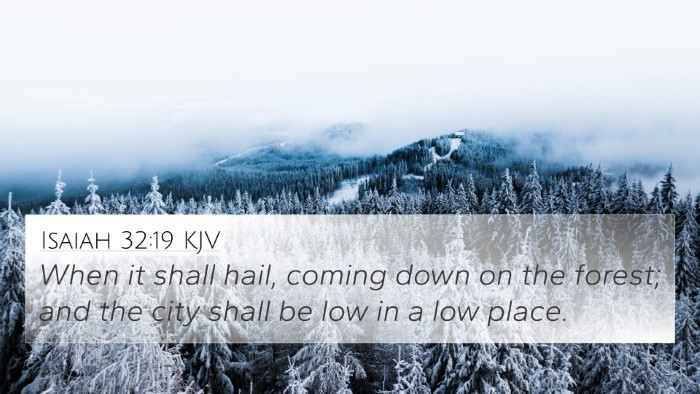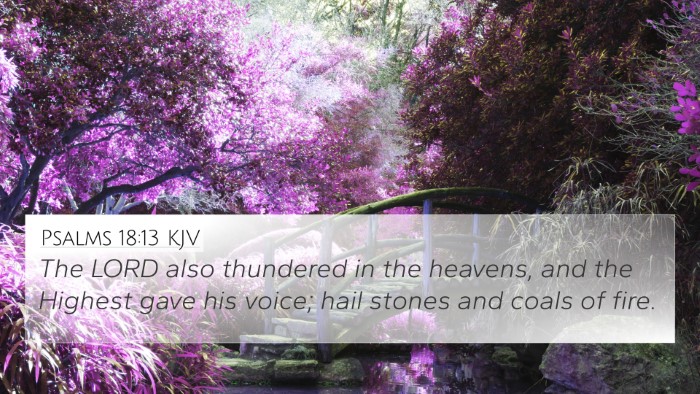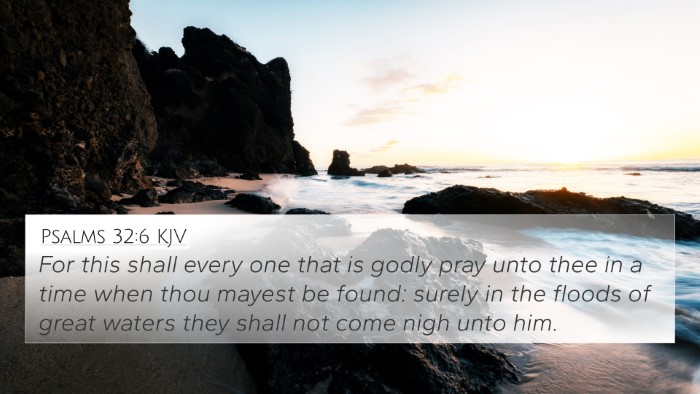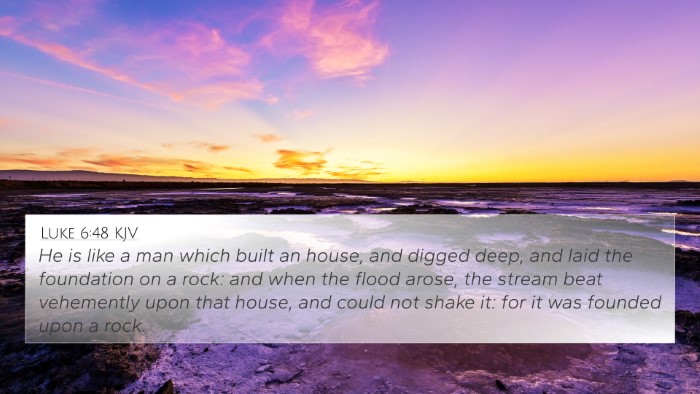Ezekiel 13:11 - Commentary and Interpretation
Ezekiel 13:11 states: "Say unto them which daub it with untempered morter, that it shall fall: there shall be an overflowing shower; and ye, O great hailstones, shall fall; and a stormy wind shall rend it." This powerful verse carries a significant meaning and offers valuable lessons, particularly regarding false prophecy and divine judgment.
Overview and Context
The context of Ezekiel 13 is rooted in God's condemnation of false prophets in Israel. These individuals were misguiding the people with false hopes and empty promises, resembling “daubing with untempered mortar,” which refers to the deceptive way of covering flaws without addressing the underlying issues. The verse serves as a warning of impending judgment, portraying a clear picture of divine retribution for the deceit practiced by these false prophets.
Insights from Commentators
Matthew Henry: Henry emphasizes that the protection promised by the false prophets would ultimately prove ineffective, comparing their false hopes to a structure built with faulty materials that cannot withstand a storm. He mentions that true prophecy does not provide comfort through lies but rather confronts the truth of human sin and the need for repentance.
Albert Barnes: Barnes elaborates on the metaphor of “untempered mortar,” indicating that it signifies insubstantial and unreliable support. He indicates that just as the faulty construction would collapse, so will the false assurances given by those who mislead the people. This critique serves as a reminder that God’s judgment will manifest through catastrophic events, symbolized by the stormy winds and hailstones.
Adam Clarke: Clarke notes the severity of the imagery used in this verse. He interprets the “overflowing shower” and “great hailstones” as symbolic of God’s judgment that will annihilate the falsehoods perpetuated by these deceivers. Clarke highlights the importance of spiritual discernment in recognizing false teachings and the ultimate accountability of those who mislead others.
Thematic Connections
This verse can be compared to various other scriptures that focus on the themes of judgment and the futility of relying on false security. Below are some key cross-references that illuminate these connections:
- Jeremiah 14:14: "Then the LORD said unto me, The prophets prophesy lies in my name: I sent them not, neither have I commanded them, neither spake unto them: they prophesy unto you a false vision and divination, and a thing of nought, and the deceit of their heart." This verse parallels the condemnation of false prophets.
- Matthew 7:24-27: "Therefore whosoever heareth these sayings of mine, and doeth them, I will liken him unto a wise man, which built his house upon a rock: And the rain descended, and the floods came, and the winds blew, and beat upon that house; and it fell not: for it was founded upon a rock." This comparison highlights the consequences of building on a faulty foundation versus a solid one.
- Isaiah 28:17: "Judgment also will I lay to the line, and righteousness to the plummet: and the hail shall sweep away the refuge of lies, and the waters shall overflow the hiding place." This verse reinforces the theme of divine judgment cutting through false securities.
- Luke 6:49: "But he that heareth, and doeth not, is like a man that without a foundation built an house upon the earth; against which the stream did beat vehemently, and immediately it fell; and the ruin of that house was great." This New Testament verse echoes similar sentiments about the dangers of neglecting solid teachings.
- 1 Peter 1:24-25: "For all flesh is as grass, and all the glory of man as the flower of grass. The grass withereth, and the flower thereof falleth away: But the word of the Lord endureth forever." A contrast is drawn between the temporal nature of false assurances and the enduring truth of God's word.
- Proverbs 24:30-32: "I went by the field of the slothful, and by the vineyard of the man void of understanding; And, lo, it was all grown over with thorns, and nettles had covered the face thereof, and the stone wall thereof was broken down." This underscores the result of neglect and inattention, paralleling the fate of those misled by false prophets.
- Ephesians 4:14: "That we henceforth be no more children, tossed to and fro, and carried about with every wind of doctrine, by the sleight of men, and cunning craftiness, whereby they lie in wait to deceive." This speaks to the need for discernment and maturity in faith in light of deceitful teachings.
- Revelation 21:8: "But the fearful, and unbelieving, and the abominable, and murderers, and whoremongers, and sorcerers, and idolaters, and all liars, shall have their part in the lake which burneth with fire and brimstone: which is the second death." This final judgment emphasizes the severity of leading others astray.
- John 10:12-13: "But he that is an hireling, and not the shepherd, whose own the sheep are not, seeth the wolf coming, and leaveth the sheep, and fleeth: and the wolf catcheth them, and scattereth the sheep." This underscores the danger posed by those who forsake their responsibility to guide and protect God's people effectively.
- 2 Timothy 4:3-4: "For the time will come when they will not endure sound doctrine; but after their own lusts shall they heap to themselves teachers, having itching ears; And they shall turn away their ears from the truth, and shall be turned unto fables." This forewarning underscores the prevalence of false teachings.
Conclusion
In summary, Ezekiel 13:11 serves as a potent reminder of the consequences of false prophecy and the importance of discerning truth in our spiritual lives. The cross-references provided enhance our understanding of the interplay of themes surrounding judgment, deception, and the need for a firm foundation in God’s word. For effective Bible study, employing tools for scripture cross-referencing can provide deeper insights into the intricate connections within biblical texts.
Tools for Bible Cross-Referencing
To delve deeper into scripture and understand the connections between Bible verses, consider utilizing various tools, including:
- Bible concordance
- Bible cross-reference guide
- Cross-reference Bible study methods
- Bible reference resources
- Comprehensive Bible cross-reference materials
Further Study Suggestions
If you seek to expand your exploration of connections between Old and New Testament teachings, consider:
- Identifying connections and comparisons between Paul’s epistles and the teachings in the Gospels.
- Conducting a detailed study of thematic links between the prophetic writings and apostolic texts.
- Cross-referencing Psalms with New Testament teachings to uncover rich insights on faith and worship.
- Utilizing cross-references for sermon preparation to clarify concepts and reinforce messages.
- Interpreting biblical themes through a cross-referencing lens to deepen your spiritual understanding.
